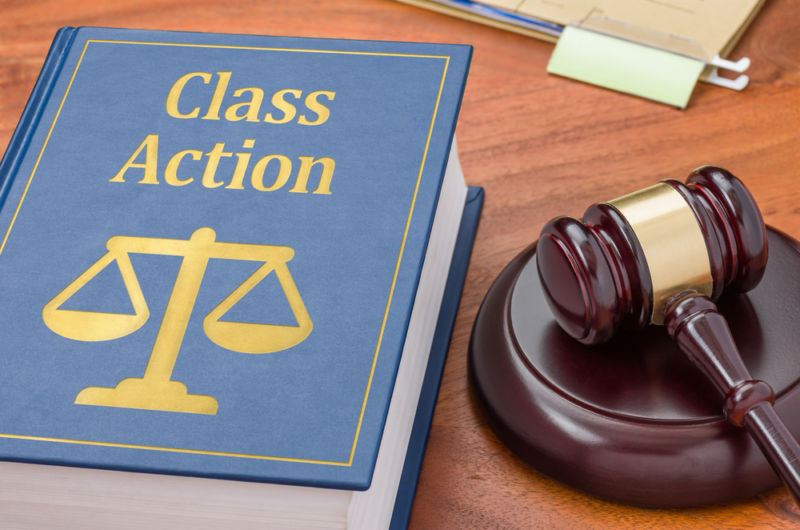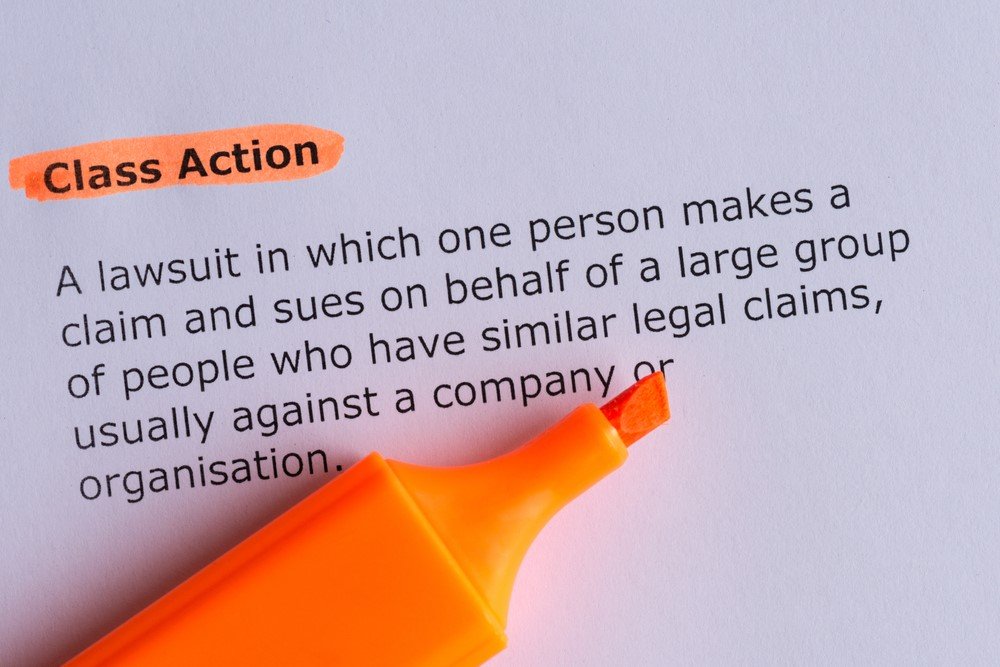Recognizing Your Legal Rights: A Comprehensive Guide to Class Action Lawsuits
Wiki Article
Understanding Class Action Claim: An Overview for Lawyers
Course action lawsuits have actually come to be an important part of the lawful landscape, permitting for the debt consolidation of multiple cases into a solitary activity. By delving right into the complexities of course action claims, this overview gears up attorneys with the expertise and tools required to successfully browse this complicated location of law.The Fundamentals of Course Action Claims
Class action suits are a lawful system utilized to combine similar claims from a team of people into a solitary suit, providing a cost-effective and effective strategy to seeking justice and resolution. This type of claim enables a depictive plaintiff, acting on behalf of the entire class, to bring an insurance claim versus an offender who has presumably created injury or violated the rights of several individuals.The standard needs for bringing a class action lawsuit include numerosity, commonness, typicality, and competence of representation. Numerosity refers to the fact that the course have to be so large that joinder of all members would be unwise. Commonality suggests that there have to be common questions of law or truth that are shared by all participants of the class. Typicality needs that the insurance claims of the representative complainant are typical of the claims of the whole course. Competence of depiction makes sure that the representative complainant will adequately stand for the passions of the entire class.
Class activity lawsuits can be useful for both offenders and plaintiffs. For complainants, it allows them to merge their sources and share the threats and expenses related to lawsuits. It also provides a degree playing field when they are up against large firms or entities. For accuseds, it provides the opportunity to effectively solve multiple claims in a solitary lawsuit, staying clear of the need to resist countless private legal actions.
Identifying and Assessing Possible Course Members
After establishing the fundamental needs for a class activity legal action, the next action is to determine and assess possible course participants. If they fulfill the essential requirements., this procedure includes identifying that might be component of the class and reviewing their cases to determine.To identify potential course members, attorneys commonly perform considerable study and gather pertinent information. This might entail reviewing documents, conducting meetings, and checking out records to determine individuals or entities that may have been affected by the alleged misbehavior. It is essential to establish a clear and comprehensive checklist of possible class participants to ensure that all influenced events are included in the legal action.
As soon as prospective class members have actually been determined, the following step is to assess their claims. If they meet the legal needs for class qualification, this involves assessing the advantages of each individual insurance claim to determine. Attorneys have to carefully examine the facts, evidence, and lawful theories of each prospective course member's case to ensure that they have a feasible case.
Analyzing potential class participants additionally includes figuring out whether they fulfill the class interpretation and have experienced comparable injury as a result of the offender's activities. This requires comparing the truths and circumstances of each prospective course participant's scenario to the allegations and legal theories placed forth in the legal action.
Navigating the Course Accreditation Refine
To successfully navigate the class qualification process, legal representatives must vigilantly follow the procedural requirements stated by the court. Course accreditation is an essential action in a class activity legal action, as it figures out whether a situation can continue as a class activity, representing a group of individuals who have similar claims versus an accused. The process entails satisfying details requirements, such as numerosity, commonness, typicality, and competence of depiction.To start with, attorneys should develop numerosity by demonstrating that the class is so huge that specific joinder is not practical. This can be attained through evidence or expert testimony. Secondly, they must establish commonality by revealing that there prevail inquiries of legislation or truth that predominate over private problems. This needs a detailed evaluation of the defenses and insurance claims involved.
Next, legal representatives have to reveal typicality, which means that the depictive plaintiff's cases are regular of the insurance claims of about his the class participants. This guarantees that the interests of the representative complainant align with the interests of the course. Attorneys have to demonstrate competence of representation, meaning that the depictive plaintiff and their guidance will rather and properly represent the passions of the course.
To navigate this procedure efficiently, lawyers need to thoroughly prepare by carrying out extensive research study, collecting evidence, and developing an engaging disagreement that pleases each of these criteria. They should also be prepared to reply to any type of objections or challenges elevated by the offender. By vigilantly sticking to the step-by-step needs stated by the court, lawyers can enhance their possibilities of getting course accreditation and advancing the interests of the class members.

Trick Methods for Managing Class Activity Litigation
Upon successfully navigating the course accreditation procedure, legal representatives have to then apply essential approaches for effectively managing class action lawsuits. These strategies are critical to ensure that the instance continues smoothly and effectively, inevitably optimizing the opportunities of a positive end result for the class members.
One secret method is to establish a natural and solid legal team (Class action lawsuit). This includes constructing a group of attorneys with experience in course activity litigation, along with various other pertinent locations such as the specific sector or topic associated with the case. A well-rounded team can bring different point of views and abilities to the table, improving the total performance of the lawsuits
Another important strategy is to develop a well-thought-out and extensive litigation plan. This strategy must outline the overall purposes of the situation, as well as the certain legal theories and disagreements that will certainly be sought. It needs to additionally include a timeline and budget to ensure that the situation remains on track and within the allotted sources.
In addition, attorneys ought to actively engage with the class participants throughout the lawsuits process (Class action lawsuit). This consists of providing regular updates on the progression of the situation, seeking input and responses from the course participants, and attending to any concerns or inquiries they may have. By promoting open interaction and partnership, lawyers can construct count on and support among the course members, which can be crucial in accomplishing a successful resolution
Working Out Class Activity Lawsuits: Arrangement and Approval
When it involves working out class activity suits, reliable negotiation and acquiring authorization are vital steps in accomplishing a resolution. Course action claims are intricate and entail a big number of complainants, making it vital to reach my site a negotiation that is fair and satisfactory to all parties included.
When a negotiation arrangement is reached, it must be approved by the court. The court's function in this process is to guarantee that the negotiation is reasonable, practical, and effectively shields the rate of interests of the course participants. The court will certainly take into consideration factors such as the nature of the claims, the stamina of the proof, the potential healing for the class members, and any objections increased by class members.
Obtaining court approval is vital as it gives finality to the negotiation and shields the passions of the course members. It makes sure review that the settlement is binding and enforceable, and course participants can get their rightful payment.
Final Thought

Class activity suits have actually come to be an important part of the lawful landscape, permitting for the combination of multiple cases right into a single activity. Class qualification is a crucial action in a class activity suit, as it establishes whether a situation can continue as a class activity, representing a team of individuals who have comparable insurance claims against an accused. By diligently adhering to the step-by-step requirements established forth by the court, attorneys can boost their possibilities of acquiring course certification and advancing the interests of the course members.
The court will certainly take into consideration factors such as the nature of the claims, the toughness of the evidence, the prospective recovery for the course participants, and any arguments elevated by class members.
By identifying and evaluating possible course members, lawyers can figure out the feasibility of a course action suit.
Report this wiki page